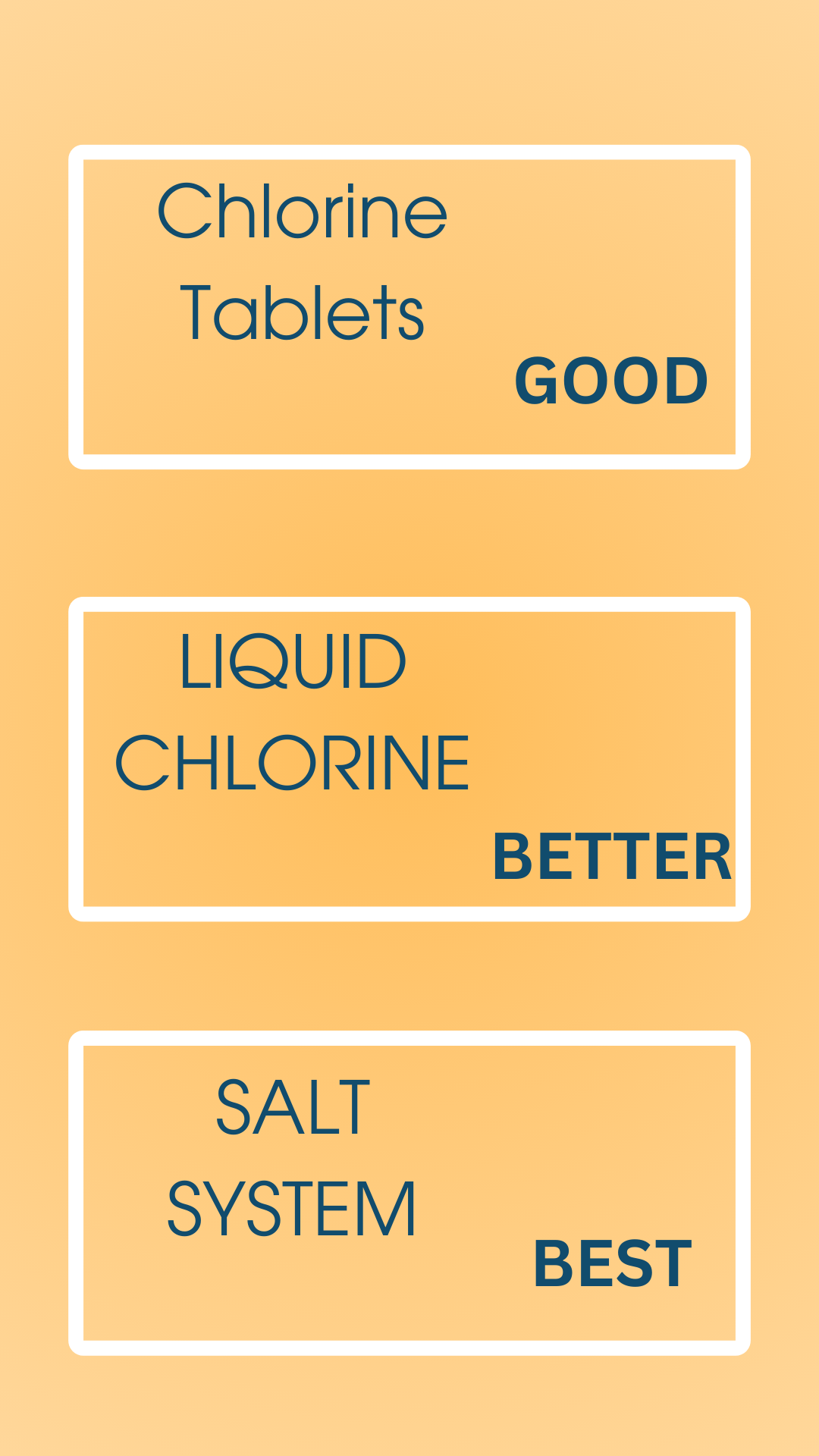Every pool must have some amount of chlorine. In order to keep a pool clean, and safe, that is unavoidable.
But HOW that chlorine is added matters more than you might think!
Goal
Deliver enough chlorine into the water to keep swimmers safe, without over-chlorinating your water and minimizing chemical byproducts.
Good
Chlorine Tablets
“Tabs” have been used for decades. They reliably add chlorine to the water, but they have the most drawbacks. Only 50% of each tab is chlorine, the other 50% is conditioner, which builds up in the water. As that conditioner level increases with each tab, it forces us to keep higher levels of chlorine in the water. This issue just compounds every year tabs are used.
Cost
Upfront:
$225 for Tablets and a floater
Ongoing:
A few hundred dollars each year for the tablets as needed.
Better
Liquid Chlorine Dispenser
This tank about the size of a suitcase gets connected to the pool equipment, and adds a little bit of liquid chlorine when the pool pump runs each day. It is a great option that doesn’t add conditioner to the water, but will require more frequent maintenance.
Cost
Upfront:
$400 for the tank
Ongoing:
liquid Chlorine billed monthly, plus maintenance for the tank
Best
Salt System
Contrary to popular belief, a salt system is not chlorine free. It is actually a tiny chlorine generator. Because it makes the chlorine we need on demand, we can maintain a more consistently low chlorine level, without adding conditioner or other byproducts. Many people enjoy the softer feeling of the salt water as well.
Cost
Upfront:
$1,500+ for parts and labor
Ongoing:
$40-$50 in spring to add salt


